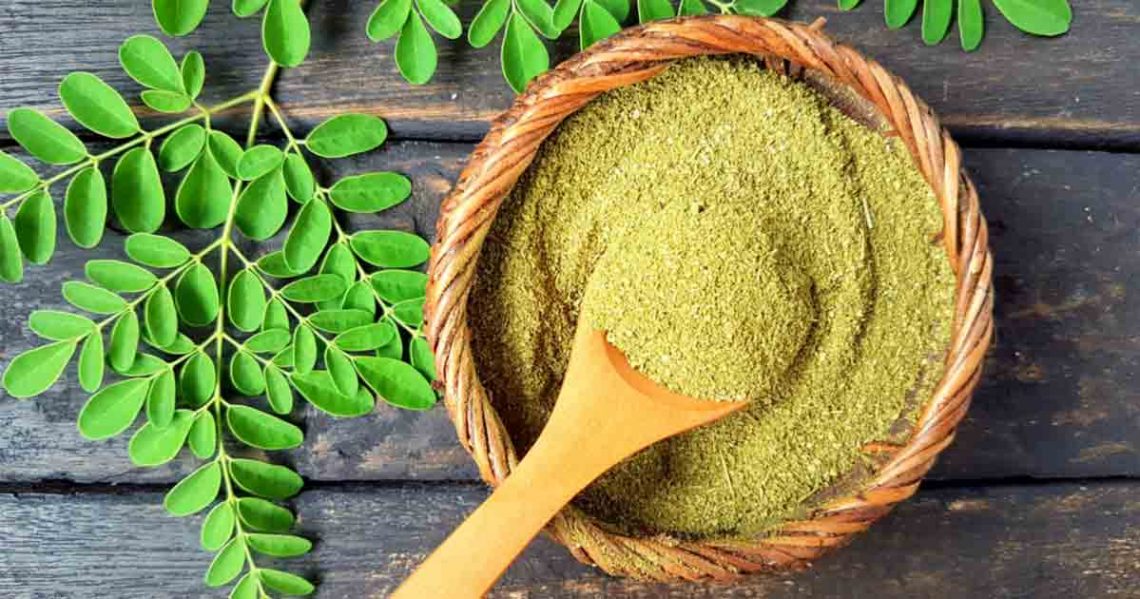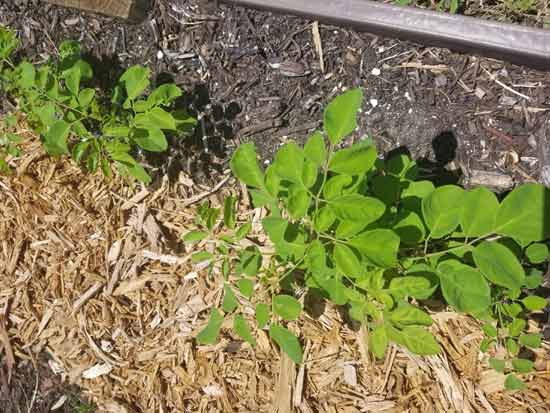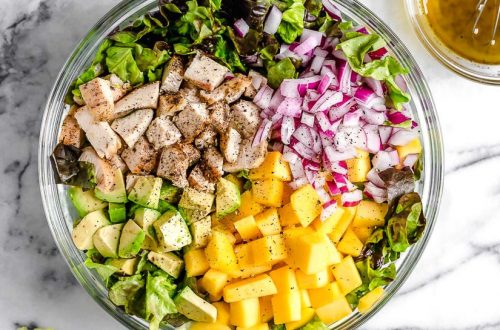
Benefits of Moringa compared to broccoli
Science has proven food can be potent medicine. Broccoli, for example, has a solid scientific foundation showing it’s one of the most valuable health-promoting foods around. While it contains several health-promoting compounds, one of the most widely studied is the isothiocyanate sulforaphane.1
The cancer-fighting properties of sulforaphane are perhaps the most well-known,2 but it has also been shown to benefit your heart3 and brain, boosting detoxification4 and helping prevent and/or treat high blood pressure,5 Alzheimer’s6 and even autism7,8,9 and schizophrenia.10,11,12
Moringa — another brassica superfood 
Another plant with many similar benefits is Moringa (Moringa oleifera), also known as horseradish tree or drumstick tree. While it looks nothing like broccoli, it is part of the brassica family and is considered a vegetable,13 despite growing like a tree.
I recently planted hundreds of organic Moringa seeds in my garden. I don’t plan on letting them grow to trees but rather have them densely planted and will harvest them as microgreens for my salad (see image above). Organic Moringa seeds are easy to obtain on Amazon but they only grow in subtropical climates.
Virtually every part of the plant is edible and has medicinal qualities, and most parts can be consumed either raw or cooked. Globally, the leaves, roots, pods and flowers are most typically consumed.14 You can also harvest the plant as a microgreen, which is what I plan on doing.
As noted in the mini-review “Health Benefits of Moringa Oleifera,” published in the Asian Pacific Journal of Cancer Prevention (APJCP) in 2014:15
“Moringa oleifera is a multi-purpose herbal plant used as human food and an alternative for medicinal purposes worldwide. It has been identified by researchers as a plant with numerous health benefits including nutritional and medicinal advantages.
Moringa oleifera contains essential amino acids, carotenoids in leaves, and components with nutraceutical properties … An important factor that accounts for the medicinal uses of Moringa oleifera is its very wide range of vital antioxidants, antibiotics and nutrients including vitamins and minerals. Almost all parts from Moringa can be used as a source for nutrition with other useful values.”
Moringa is an excellent source of protein (dried leaves containing 30.3% crude protein and 19 amino acids16), fatty acids (44.57% being a-linolenic acid17), beta-carotene, phenolics, zeatin, quercetin, beta-sitosterol, kaempferol,18 flavonoids and isothiocyanates.19
As noted in a 2011 paper20 on the nutritional composition of Moringa leaves, “The values of amino acids, fatty acids, minerals and vitamin profiles reflect a desirable nutritional balance.” A 2007 paper in Phytotherapy Research describes Moringa’s benefits, noting that:21
“… [T]he leaves, roots, seed, bark, fruit, flowers and immature pods act as cardiac and circulatory stimulants, possess antitumor, antipyretic, antiepileptic, antiinflammatory, antiulcer, antispasmodic, diuretic, antihypertensive, cholesterol lowering, antioxidant, antidiabetic, hepatoprotective, antibacterial and antifungal activities, and are being employed for the treatment of different ailments in the indigenous system of medicine …”
Other studies22 report Moringa can help protect liver, kidney, heart, testes and lung health, has analgesic and antiulcer activity, offers protection against radiation, and helps modulate your immune system. Research has also confirmed Moringa has a very high degree of safety,23 although high doses of seed extracts, specifically, may have toxic effects.24
Like broccoli, Moringa contains potent anticancer compounds
Studies have shown sulforaphane found in broccoli supports normal cell function and division while causing apoptosis (programmed cell death) in colon,25 liver,26,27 prostate,28 breast29 and tobacco-induced lung cancer.30
Similarly, many of the health benefits of Moringa — which include the prevention and treatment of inflammatory diseases, neurodysfunctional diseases, diabetes and cancer — are also attributed to its glucosinolate31 and isothiocyanate32 content. The isothiocyanate in Moringa is called moringin.33 A 2018 paper34 in Scientific Reports reviewed the chemoprotective glucosinolates found in 12 species of Moringa, pointing out that:
“Glucosinolates (GS) are metabolized to isothiocyanates that may enhance human healthspan by protecting against a variety of chronic diseases …
We assess leaf, seed, stem, and leaf gland exudate GS content of 12 of the 13 known Moringa species … We document potent chemoprotective potential in 11 of 12 species, and measure the cytoprotective activity of 6 purified GS in several cell lines. Some of the unique GS rank with the most powerful known inducers of the phase 2 cytoprotective response.
Although extracts of most species induced a robust phase 2 cytoprotective response in cultured cells, one was very low (M. longituba), and by far the highest was M. arborea, a very rare and poorly known species …
Overall, cytoprotective enzyme inducer potency for 11 of 12 Moringa leaf extracts was comparable to that observed for broccoli seeds, which are the most potent plant source of this activity.”
As explained in the Scientific Reports paper,35 glucosinolates are metabolized into active isothiocyanates by an enzyme called myrosinase. Myrosinate also produces the isothiocyanate moringin,36 a compound in Moringa also known as 4RBITC (after its chemical name, 4-(alpha-L-rhamnopyranosyloxy)benzyl isothiocyanate). Like sulforaphane in broccoli, moringin has potent anti-inflammatory and cytoprotective effects.37
The isothiocyanate-related health benefits from cruciferous veggies such as broccoli and Moringa can thus be effectively augmented by pairing it with a myrosinase-containing food38 such as mustard seed39 (the most potent), daikon radishes, wasabi, arugula or coleslaw.
Moringa also has potent antibiotic activity
Like broccoli, Moringa has also been shown to have potent antibiotic activity against a wide variety of pathogens, including Escherichia coli, Salmonella typhimurium, Candida and Helicobacter pylori (H. pylori).40
One significant benefit of Moringa over broccoli, however, is its economic viability. While broccoli is difficult to grow, Moringa is extremely hardy, drought resistant and easy to grow. As such, it offers valuable benefits to underserved populations worldwide where health care and Western medicines, including something as basic as antibiotics, are hard to come by.41 As noted in Scientific Reports:42
“… (4RBITC), the isothiocyanate created by hydrolysis of ‘glucomoringin’ … from M. oleifera is a potent and selective antibiotic against H. pylori.
Other studies have shown that the antibiotic activity of 4RBITC from M. oleifera is selective and potent against other important human pathogens such as Staphylococcus aureus and Candida albicans. It also appears to be effective in controlling certain manifestations of both ALS and multiple sclerosis in mouse models.
A growing number of epidemiologic, animal, and clinical studies link dietary glucosinolates and their cognate isothiocyanates to protection against chronic diseases including a variety of cancers, diabetes, and autism spectrum disorder via the Keap1-Nrf2-ARE-mediated induction of phase 2 cytoprotective enzymes.
The coordinated Nrf2-mediated upregulation of this large group of enzymes is responsible for the very important indirect antioxidant activity of these isothiocyanates.”
A 2005 study43 in Planta Medica, the effectiveness of several different isothiocyanates were compared to see which offered the most potent protection against H. pylori. Of the isothiocyanates tested, sulforaphane and moringin (4RBITC) were the most effective. As noted by the authors:44
“[W]e showed for the first time that ITCs other than sulforaphane also exhibit a potent effect against H. pylori … Among the compounds tested in the present study, 4RBITC and sulforaphane exhibited the highest inhibitory activity against H. pylori.”
Moringa, a potent influenza remedy
Another component Moringa shares with broccoli, quercetin, is a plant flavonol that packs a powerful antiviral punch, combats inflammation and acts as a natural antihistamine. Quercetin (which is also available in supplement form) has been used to ameliorate obesity, Type 2 diabetes, circulatory dysfunction, chronic inflammation and mood disorders.45
As noted in one paper,46 “the most obvious feature of quercetin is its strong antioxidant activity which potentially enables it to quench free radicals from forming resonance-stabilized phenoxyl radicals.”
A number of studies have also highlighted quercetin’s ability to prevent and treat both the common cold47 and influenza,48 making it a safe alternative to antiviral drugs such as Tamiflu (a risky drug49 that does not reduce viral transmission and does not lower your risk of complications from the flu, such as pneumonia.50,51)
For example, a 2010 animal study found that quercetin inhibits both influenza A and B viruses. Importantly, they also discovered the viruses were unable to develop resistance to quercetin. What’s more, when used concomitantly with antiviral drugs (amantadine or oseltamivir), the effect was significantly amplified, while preventing drug-resistance from developing.52 Quercetin has also been shown to be effective against:
“Bird flu” (H5N153) “Swine flu” (H1N154,55 and H3N256)57 Herpes simplex virus type 1, polio-virus type 1, parainfluenza virus type 3 and respiratory syncytial virus58 Hepatitis B59 and C60,61 Dengue62 Moringa — even better than broccoli?
While broccoli and Moringa share many similarities, and offer many of the same health benefits, Moringa comes out on top in terms of economics. It’s far easier to grow, even under challenging conditions, making it an excellent option in areas plagued by drought and other environmental challenges.
The fact that you can eat more or less the whole tree in a variety of different ways also makes it an attractive option. The long seed pods, colloquially known as Moringa drumsticks, are a common staple in Indian cuisine. For information and a few sample recipes, see NDTV Food’s website.63
As mentioned earlier, you can also harvest these seeds, sow them, and harvest them like microgreens, i.e., while they’re small like sprouts. For a quick review of how to do this, see the video below. For guidance on how to grow Moringa trees, see my previous article, “How to Grow Moringa Tree.”
Read more about this at: articles.mercola.com




